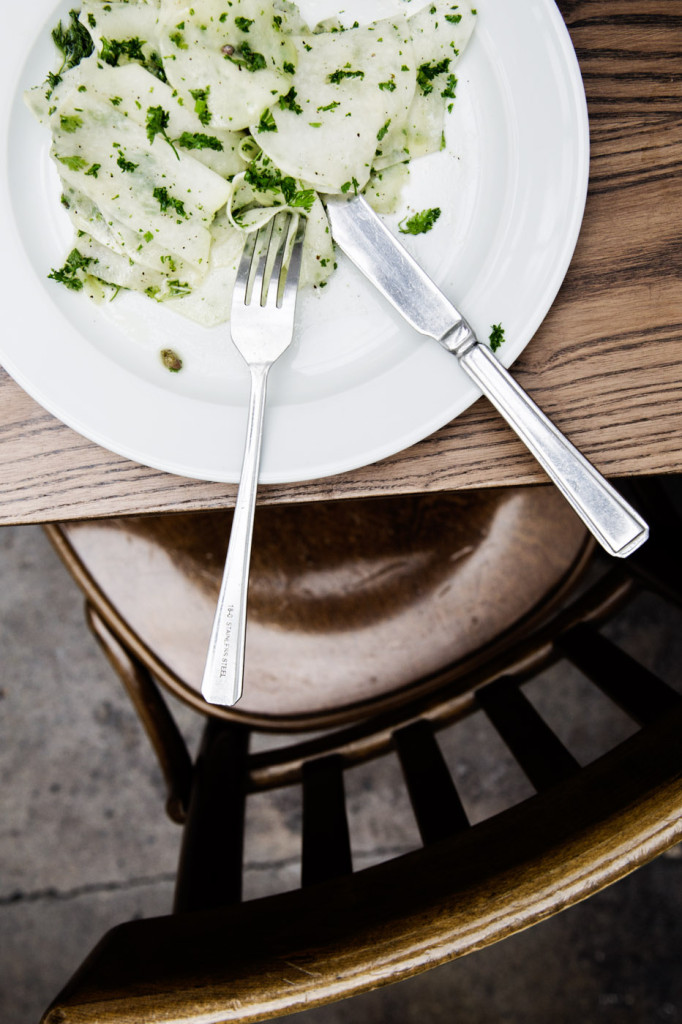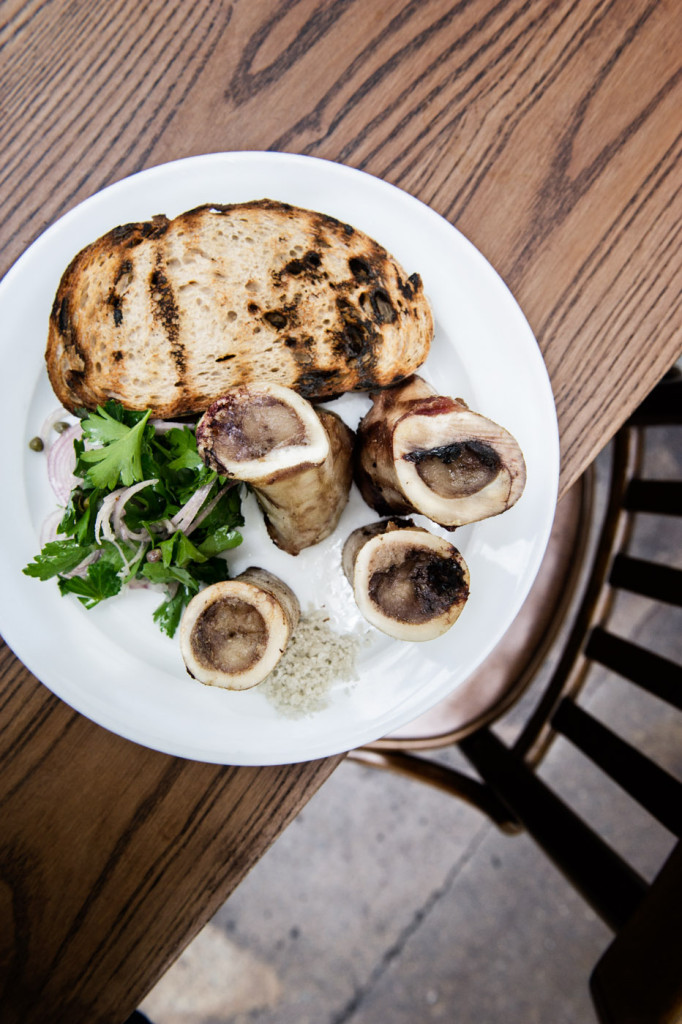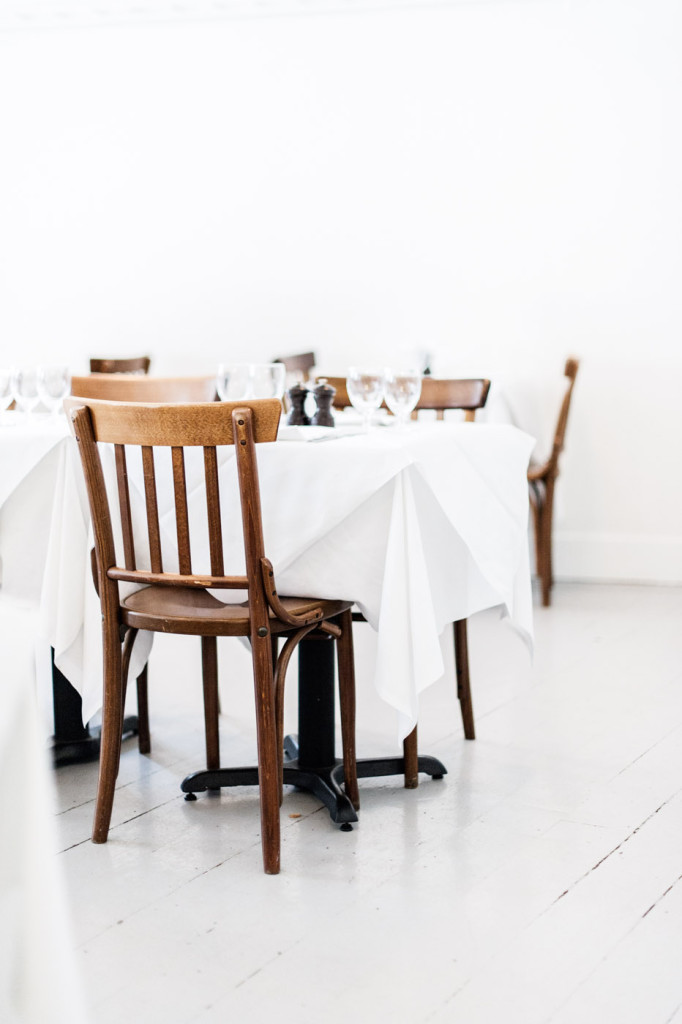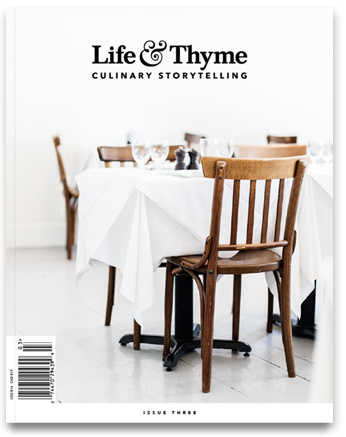It would be easy to devote this entire article to singing the praises of St. John’s food. The decadent bone marrow, the peppery ribbons of kohlrabi, the plump, perfect madeleines carved into seashells. It would be easy to go on about the bitter, bouncy loaves made fresh in the open bakery and stacked on the bar like flour-dusted terracotta pots. Just as easy to wax lyrical about the glut of hand-selected wines, from heady Burgundies to floral, curt whites dripping with condensation. But I would not be the first. In its 20 years in London’s Smithfield, St. John’s daily-changing menu has broken grounds that weren’t even there to break in the first place. It has quieted the long belief that England has bad food. It has shone a light on the delights of sweetbreads, tongue and pig trotters. It has offset a domino of whitewashed and simplistic restaurants in England’s capital, where the focus must be on the food and the atmosphere around it. And all the while, the two men behind London’s high Church of British cooking had no interest in being cutting edge at all. So take it as a given, the food in St. John is just as you’ve heard: conversation-stirring, innovative, modest, ceremonial.


However, there is something more to St. John than its celebrated cooking, something that lifts it from the map and turns it into a realm of its own. While it is the food that entices new clientele to their restaurants, it is the atmosphere of St. John that keeps them coming back. If St. John were a person, it would be colorful and jovial––with a grin on its face and a glass of red in its hand. In fact, it would look a lot like its founders, Trevor Gulliver and Fergus Henderson. “When you walk into a restaurant that knows what it’s doing, you can feel it,” Henderson tells us, topping up our glasses. “We just wanted to get that.”
“What a restaurant is, is often forgotten these days,” Gulliver agrees. “It’s always a delight to see happy people, in the staff and the guests.” The dedicated team that work beside (not behind) Henderson and Gulliver are loving, abiding and openly adoring. “There’s more team spirit in this kitchen than in any other I’ve ever been in,” Chef de Partie John Wigley tells us. “We don’t have any of that old French style of calling each other ‘chef’ or anything like that. We call each other by our first names. There’s no strict hierarchy in here. We’re just working together.”

We visited St. John’s Smithfield restaurant, which Gulliver and Henderson call “The Mothership,” on a Thursday. It took a while to meet them, as Gulliver was tasting wine with Jackson Boxer of Brunswick House and Henderson was off on a lunchtime jaunt with friends. For a while, we sat in the bar area, with its high ceilings and white pillars, while waiters in white jackets milled around gently tending to the last lunch guests. And then all at once, Henderson entered the front door in yellow braces and tartan trousers and completed the St. John picture.
Naturally, we were invited to join the two at a table with a few bottles of red. And a few bottles of white. Talk ran from the early days of St. John (“There were moments of fear initially. And then suddenly it was all okay,” says Henderson), to the revival of British cooking in London (“What revival?! Nothing’s changed in here,” says Gulliver), and Henderson’ wardrobe (“He puts his jacket on backwards!” says Gulliver). The two overlap each other, their voices clashing in the air. Yet they listen intently to each other, laugh at each other’s jokes, and sip wine in unison. This is not a business partnership; this is a friendship built on a shared passion. If ever Gulliver edged toward cynicism, Henderson would mutter, “Be positive,” to which he would reply, “I am being positive.”


Talk turned to fashion in food, something I suspect neither of them have ever thought to consider. “Trend means impermanence to me,” Henderson says.
“We’re comfortable in our own skin. Food is rollout retail now. But we have a restaurant, and we care about how we source things, how we cook things, and how we serve them. Fashion is dangerous. Trend is even more dangerous. It’s get rich quick,” Gulliver agrees.
But make no mistake, St. John’s jolly façade is driven by a firm focus. After all, there is a reason why they are one of the world’s most admired restaurants. “This is not a game. We’re serious about what we do,” Gulliver says suddenly. “But that doesn’t mean we can’t have fun. The better you do it, the more fun you can have.”
—
To read the full story, buy Issue Three from our online shop.




Our comments section is for members only.
Join today to gain exclusive access.